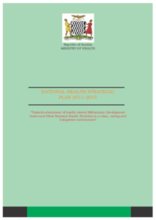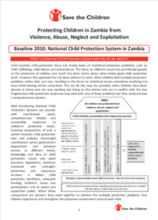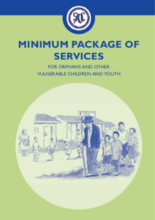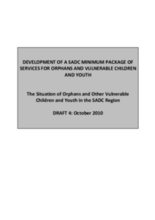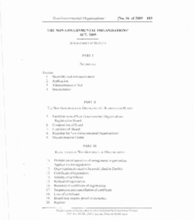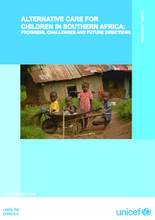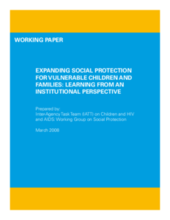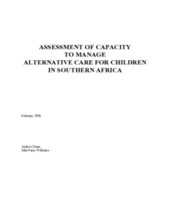childrens_living_arrangement
children_living_without_bio
Displaying 121 - 130 of 155
This report was conducted to provide an extensive assessment designed to map the existing child protection system in Zambia.
This document is the National Health Strategic Plan 2011 to 2015 (NHSP 2011-15) for Zambia.
This fact sheet by Save the Children provides an overview of the current status of national child protection systems in Zambia.
The Minimum Package is a guide to encourage the harmonizing of service delivery for Orphans and Other Vulnerable Children and Youth (OVCY) across the Southern African Development Community (SADC) region.
This Situation Analysis Report is one of a series of three documents: (1) Report on the Situation of Orphans and Vulnerable and Children and Youth in the SADC Region; (2) Conceptual Framework for Psychosocial Support for Orphans and Vulnerable Children and Youth in the SADC Region; and (3) Minimum Package of Services for Orphans and Vulnerable Children and Youth in the SADC Region. The Situation Analysis Report has informed the development of the PSS Framework and the Minimum Package of Services.
This report presents the findings of a regional study on children’s participation in Southern Africa.
This Act provides for the co-ordination and registration of non-governmental organisations in Zambia.
This report, prepared for UNICEF East and Southern Africa Regional Office (ESARO) assesses the capacity in Malawi, South Africa, Swaziland and Zambia to manage alternative care systems for children.
Examines the institutional challenges in implementing national social protection programmes
This report, prepared for UNICEF East and Southern Africa Regional Office (ESARO) assesses capacity of Malawi, South Africa, Swaziland and Zambia to manage alternative care systems for children.


